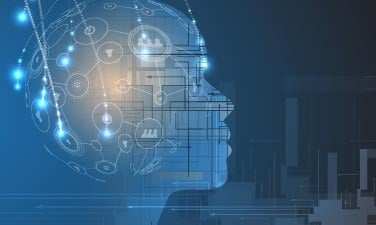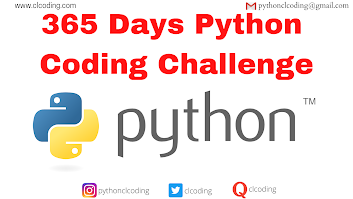Artificial Intelligence (AI) is no longer a futuristic concept — it’s here, powering innovations in business, healthcare, finance, education, and more. From chatbots and recommendation systems to predictive analytics and autonomous decisioning, AI is reshaping how we solve problems.
But understanding AI isn’t just about algorithms and data. To build real, scalable, deployable solutions, you also need to understand the cloud — where most AI applications run in production. That’s where the “AI Fundamentals and the Cloud” course shines: it combines foundational AI concepts with practical cloud computing skills so that you’re not just building models but running them in real-world environments.
Why This Course Matters
Most AI learning paths focus heavily on theory — how algorithms work and how to implement them locally. But in the real world:
-
AI models run in the cloud
-
Data is stored and processed with cloud technologies
-
Scalable AI solutions require cloud infrastructure
-
Collaboration and deployment happen in distributed environments
This course bridges that gap. It teaches you core principles of AI and how to leverage the cloud to train, deploy, and scale models — a combination that’s highly valuable in any AI career.
What You’ll Learn — Core Themes & Skills
The course is structured to build from fundamentals toward real-world application. Here’s what you’ll cover:
1. AI Fundamentals
You’ll begin with foundational AI topics:
-
What AI is and how it differs from traditional programming
-
Core concepts like supervised vs unsupervised learning
-
Common algorithms and when to use them
-
How data fuels AI models
This part ensures you understand what AI is before diving into how to run and scale it.
2. The Cloud & AI Integration
Cloud platforms (e.g., AWS, Azure, Google Cloud) are where production AI lives. In this section, you’ll learn:
-
What cloud computing is and why it’s essential for AI
-
How to leverage cloud services specifically for AI workflows
-
Deploying models in the cloud rather than on local machines
-
Scaling your AI applications to serve real users
This is vital for anyone who wants to move beyond notebooks and into production.
3. Tools & Services for Scalable AI
The course introduces you to cloud-based tools that help with:
-
Data storage and management
-
Model training and hosting
-
Automated pipelines for data preprocessing
-
APIs and interfaces for inference
Learning these tools helps you build end-to-end AI systems that run reliably at scale.
4. AI in Real Use Cases
AI isn’t just theory — it’s applied. You’ll explore:
-
Real business cases where AI adds value
-
How the cloud enables practical solutions in production
-
Lessons from industry implementations
This gives you a tangible sense of how and where AI is used — not just what it is.
Who Should Take This Course
This course is ideal for:
-
Beginners curious about AI and cloud technology
-
Students looking for an AI career path
-
Developers and engineers wanting to understand cloud-based AI workflows
-
Business professionals seeking practical AI insight for decision-making
-
IT or cloud specialists transitioning into AI roles
Whether you’re just starting or want to connect AI to real systems, this course offers broad perspective and practical grounding.
Why This Course Is Valuable — Its Strengths
Balanced Focus: Theory + Practice
You learn both core AI principles and how to apply them using cloud technologies — a combination rarely found in introductory courses.
Cloud Integration
AI models are usually deployed on cloud platforms in real systems. This course gives you the context and tools to work in scalable environments.
Practical Use Cases
Rather than staying abstract, the course connects learning to real business and technology applications — making it easier to see why skills matter.
Career-Aligned Learning
AI + cloud is a powerful pairing that employers are actively seeking — especially for roles in ML engineering, AI operations, cloud AI development, and technical leadership.
What to Keep in Mind — For Best Learning
To make the most of this course:
-
Be comfortable with basic computer science concepts like variables, functions, and data structures
-
Learn hands-on: try building small models and deploying them on cloud platforms
-
Think about AI as part of a system — not just a model — that includes data flow, endpoints, users, and scale
-
Try small demo projects that combine AI + cloud deployment after each module
How It Can Boost Your AI Journey
After completing this course, you’ll be able to:
- Understand how AI works from first principles
- Build and train models locally and in the cloud
- Deploy models in scalable cloud environments
- Connect cloud services with AI workflows
- Communicate effectively with engineers, stakeholders, and product teams
- Take the next step toward specialized AI or cloud careers
This course gives you the framework, vocabulary, and skills needed to work on real AI applications — not just toy examples.
Join Now: AI Fundamentals and the Cloud
Conclusion
If you’re serious about a career in AI — whether as a developer, engineer, data professional, or technical leader — “AI Fundamentals and the Cloud” gives you a practical, future-proof foundation.
It moves beyond isolated algorithms to show you how AI fits into real systems powered by cloud technologies — teaching you both concepts and execution. If you want to build real AI solutions that scale, perform, and deliver value, this course can help you start strong.


















.png)






.png)























